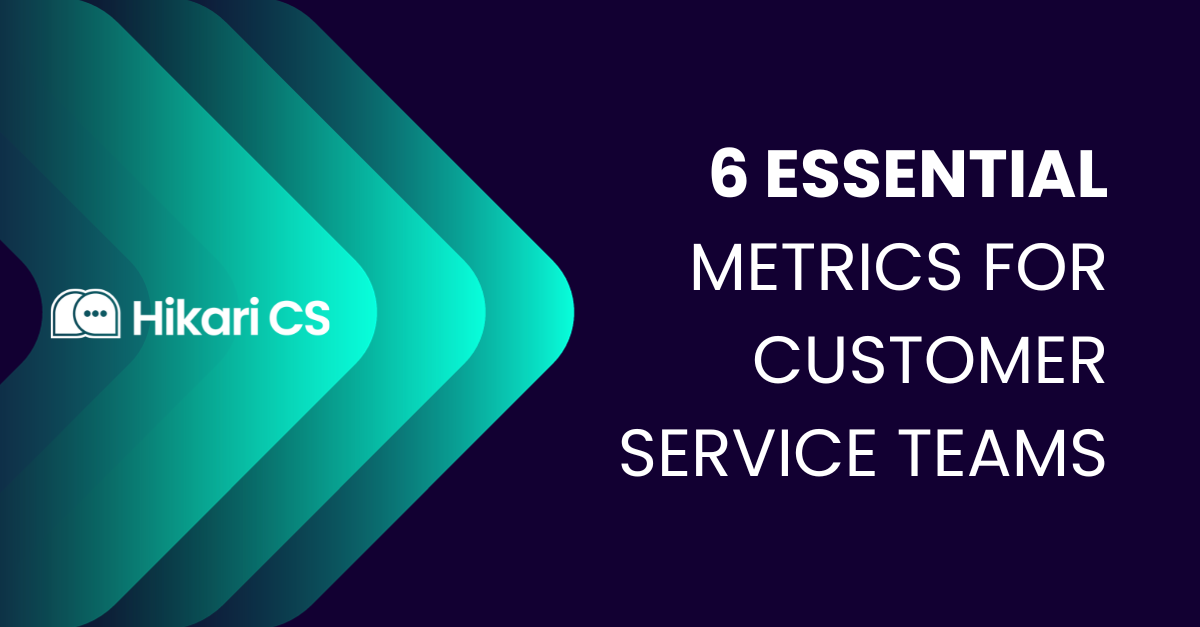How to measure the performance of your customer service team
-
Best Practices
Hikari CS - Jan 05,2024

When managing a customer service team, understanding their performance is crucial. As a business owner or manager who may not be an expert in customer service, it's your responsibility to ensure your customers are well taken care of. The only way to achieve this is through measurement.
But what should you measure, and how?
Reinventing the wheel is unnecessary; we've outlined the key aspects to monitor and how to do so with minimal time and resources.
Quantitative Performance Evaluation
Firstly, let's look at quantitative indicators, which are easily measurable - provided you use the right tools. Counting manually with Excel or going through your email inbox is not advisable as it's time-consuming and prone to errors.
If you partner with an agency such as Hikari CS, they can provide you with dashboards and periodic reports of the following data. If you use a tool managing emails and chat, these metrics should be accessible within that platform.
- First Response Time: This metric measures the time taken by your team to send the first response after receiving a customer's message. Quick response times are crucial because customers don't want to wait hours on hold or days for an email response. Long waits can deter potential customers and diminish the satisfaction and loyalty of existing ones. Aim to respond within 30 seconds for live chats, and keep email response times under an hour.
- Resolution Time: This is the time it takes your team to fully resolve a conversation. While it's not as critical as the first response time, resolution time can still provide insights into the efficiency of your customer service. Factors such as a slow-responding customer can affect this time, but it helps you understand how long your team takes on average to handle each interaction.
- CSAT (Customer Satisfaction Score): This score, often ranging from 1 to 5 stars, reflects how a customer rates their interaction with your support team. A 1-star rating indicates poor service, 3 stars are neutral, and 5 stars mean excellent service. But why does this matter? It reveals which aspects of your service are hitting the mark with your customers and which are falling short. Keep in mind that a low CSAT score doesn't always mean your team performed poorly; a customer's dissatisfaction could stem from company policies or pricing, neither of which is directly controlled by your team. Nonetheless, CSAT serves as a crucial source of feedback, guiding you to make meaningful improvements in your business operations.
- Availability: This indicates whether your team was actually available during the customer service hours. Why is this important? Because your customers expect that your service hours are indeed the times when they can get assistance. If someone on your service team is late and a customer has to wait unexpectedly longer, this immediately has a negative impact on trust and customer satisfaction. Tools are also available here that should tell you at a glance whether your team was available on time and remained so. Moreover, this is also reflected in the first response time, as it begins measuring as soon as a message is received within service hours.
Qualitatively Assessing Performance
- CSAT (Customer Satisfaction): We have already discussed CSAT above as a quantitative indicator, but as it turned out from the earlier explanation, it is also definitely a qualitative indicator. Use the insights to see which topics your customers are satisfied or dissatisfied with. Look at the average across all customers and compare it with the average of individual team members. If someone deviates strongly, then offer this person additional training or guidance.
- Knowledge and Correct Answers: Unfortunately, there isn’t a system or tool available for this, but it is extremely important. Review customer conversations on a sample basis and check how your team is responding. If the information is accurate, great! If the answers are incorrect, provide additional training or guidance. It also helps to establish a central knowledge base where answers and processes are documented. With this, your team can always look up the correct answers. Consider also having internal support or second-level support so that team members have someone to turn to for help.
- On Brand & Style: This point is aligned with the previous one but focuses on style rather than knowledge. As a company, you undoubtedly have a communication style, and you want to make sure that it is also carried over into your customer communication. Here again, it is useful to review conversations on a sample basis to see if your team adheres to it. Consider creating a brand guide that can be included during the training of your customer service team.
Why Automatic Reporting is Important
As you may have read, quantitative indicators can be easily measured if you have the right tools or work with the right partner. These indicators provide immediate insights, so you know how your customer service team is performing. Once set up, such a report can show the right information in a matter of seconds.
Without this, manually compiling the information would take a lot of time, and ultimately, other matters take priority, resulting in the performance tracking of your customer service team falling by the wayside. However, there are so many proven examples of how excellent customer service can significantly contribute to your business's results. So needless to say, this is a must have for your business.
Qualitative indicators can be periodically and randomly reviewed, or specifically in response to quantitative indicators to gain further insights.
It Takes Time, But It Pays Off
You might be thinking that setting everything up will require a significant amount of time! If you do it yourself without the proper knowledge, there's a lot of information and tools available online, but you will need to dedicate time to it. Once implemented, it will save you an enormous amount of time and headaches, and eventually, it will be a modest investment in the quality of your business that can yield significant returns. Only 7% of e-commerce businesses have this nailed down. You can, therefore, distinguish yourself right away!
On the other hand, there are also companies that specialize in managing your customer service. They take full control and provide you with real-time dashboards. That's why it might be interesting to outsource the customer service of your ecommerce business to these partners. Chances are that they are also cheaper and more flexible than your inhouse teams. This approach is the least time-consuming, and you can be assured that it's being handled properly.

